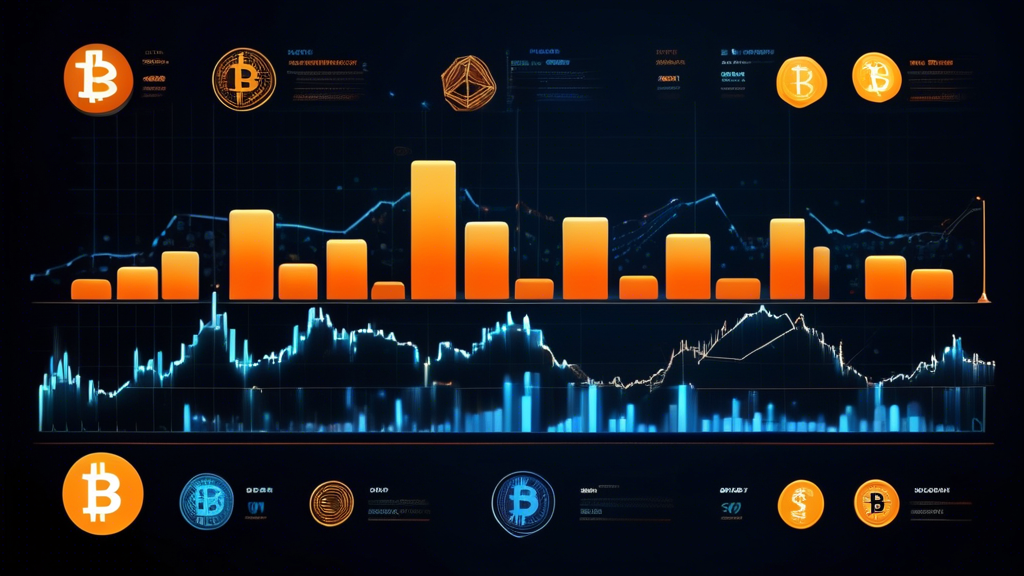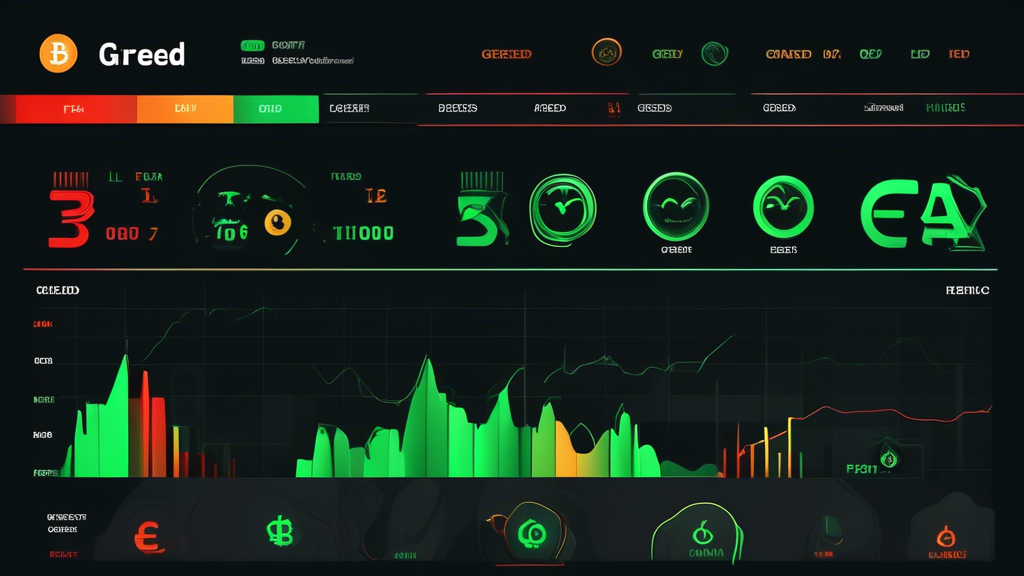Understanding the Dynamics of Crypto Market Cap
The concept of crypto market cap is pivotal in the world of digital currencies, serving as a key indicator of the relative size, health, and potential of different cryptocurrencies. As we navigate through the evolving landscape of digital assets, understanding the dynamics of crypto market cap can provide invaluable insights for both novice investors and seasoned traders. This article delves into the nuances of crypto market cap, dissecting its fundamental components, influencing factors, and growth patterns to offer a comprehensive perspective on this critical metric.
What is Crypto Market Cap? Breaking Down the Basics
Understanding the Dynamics of Crypto Market Cap
What is Crypto Market Cap? Breaking Down the Basics
The term crypto market cap is one of the fundamental metrics used to gauge the size and value of a cryptocurrency. Market capitalization, or market cap, is calculated by multiplying the current price of a cryptocurrency by its circulating supply. This simple yet powerful formula provides a snapshot of a cryptocurrency’s value within the market.
For instance, if a cryptocurrency has a price of $50 and a circulating supply of 1 million coins, its market cap would be $50 million. This figure helps investors compare and analyze the relative size of different cryptocurrencies. Market cap gives a more complete picture than price alone, offering insights into the overall value and significance of a cryptocurrency within the broader market.
Importance of Market Cap in the Crypto Sphere
The crypto market cap is pivotal for several reasons. First and foremost, it serves as a crucial indicator of a cryptocurrency’s market value. Higher market cap often implies a dominant and well-established presence in the market. Such cryptocurrencies are generally considered more stable and less prone to extreme price volatility, drawing the attention of risk-averse investors.
Additionally, market cap helps categorize cryptocurrencies into different segments, such as large-cap, mid-cap, and small-cap. This classification aids investors in diversifying their portfolios by investing in cryptocurrencies across various market cap ranges. Understanding the importance of crypto market cap can help investors make more informed decisions and allocate resources more effectively within this volatile asset class.
Different Types of Market Cap: Large-cap, Mid-cap, and Small-cap Cryptocurrencies
Cryptocurrencies are often categorized based on their market cap to help investors quickly assess their risk and return profiles. Here’s a breakdown of each category:
Large-cap Cryptocurrencies
Large-cap cryptocurrencies are those with a market cap exceeding $10 billion. These cryptocurrencies, such as Bitcoin and Ethereum, are considered to be safer investments due to their established track records and significant market presence. They typically offer lower but more stable returns compared to smaller-cap coins. Investors flock to large-cap cryptocurrencies for their perceived security and reduced risk profile.
Mid-cap Cryptocurrencies
Mid-cap cryptocurrencies have a market cap between $1 billion and $10 billion. These cryptocurrencies offer a balanced mix of risk and reward. Mid-cap coins often represent innovative projects with solid growth potential. However, they also come with higher volatility compared to large-cap cryptocurrencies. Mid-cap investments can be ideal for investors looking to strike a balance between stability and growth potential.
Small-cap Cryptocurrencies
Small-cap cryptocurrencies have a market cap of less than $1 billion. These are considered high-risk, high-reward investments. Small-cap cryptocurrencies can offer exponential growth, but they come with larger risks of failure and extreme price fluctuations. These cryptocurrencies might attract more speculative investors or those interested in exploring niche markets within the crypto ecosystem.
In conclusion, understanding the various tiers of crypto market cap is essential for investors looking to navigate the complex and dynamic world of cryptocurrencies. Whether evaluating a large-cap coin for stability or a small-cap coin for high growth potential, the crypto market cap remains a central metric in guiding investment decisions.
Factors Influencing Crypto Market Cap: Staying Ahead of Market Trends
The Role of Coin Supply and Coin Price in Determining Market Cap
Crypto market cap, short for cryptocurrency market capitalization, is a key indicator of the value and potential stability of a digital asset. It is calculated by multiplying the current price of a cryptocurrency by its total supply in circulation. This formula illustrates that market cap is directly influenced by two primary factors: coin supply and coin price. Changes in either of these aspects can significantly impact the market cap, reflecting how the market perceives a cryptocurrency’s value.
For example, a high coin price combined with a substantial supply will result in a large market cap, signaling a strong market presence. Conversely, a low coin price or limited supply will yield a smaller market cap, generally indicating a niche or emerging cryptocurrency. As new coins are mined and enter circulation, the dynamics of supply constantly change, further influencing the market cap over time. It’s essential for investors to keep a close watch on both of these factors to gauge the health and potential for growth in any cryptocurrency asset.
How External Factors Like Regulations and Technological Developments Impact Market Cap
Beyond internal metrics, external factors also play a significant role in determining the crypto market cap. Regulatory developments are among the most impactful external influences. Legislations and governmental policies can either propel or stifle the growth of cryptocurrencies. For instance, a government endorsing digital assets with clear regulatory frameworks can boost market confidence, driving coin prices up and subsequently increasing market caps. Conversely, stringent regulations or outright bans can deflate investor confidence, reducing prices and shrinking market caps.
Technological advancements are another crucial determinant. Innovations such as blockchain scalability solutions, improvements in transaction speeds, and enhanced cybersecurity measures can attract more investors, positively affecting a cryptocurrency’s market cap. Furthermore, partnerships and the adoption of blockchain technology by reputable institutions can enhance the perceived value of a cryptocurrency, causing its market cap to rise. Staying updated with these technological trends allows investors to make informed decisions and anticipate changes in market cap.
Investor Sentiment and Market Volatility: Key Drivers of Market Cap Fluctuations
Market cap is not immune to the whims of human emotion and market behavior. Investor sentiment, often influenced by fear, uncertainty, and doubt (FUD), or conversely, fear of missing out (FOMO), is a powerful force that can cause dramatic swings in the market cap. Positive news, like a high-profile endorsement or the successful implementation of a significant blockchain upgrade, can incite bullish sentiment, driving up coin prices and boosting market caps. On the other hand, negative news, such as security breaches, regulatory crackdowns, or macroeconomic downturns, can elicit panic-selling, reducing prices and shrinking market caps.
Market volatility adds another layer of complexity. Unlike traditional financial markets, the cryptocurrency market is known for its high volatility. Prices can fluctuate wildly within short periods, impacting market caps correspondingly. This volatility is often driven by market sentiment but can also be influenced by trading volumes, market manipulation, and the entry or exit of large investors, commonly referred to as whales. Understanding these elements can help investors navigate the volatile landscape of cryptocurrencies and make strategic decisions to leverage market cap movements.
In essence, while the crypto market cap provides a snapshot of a cryptocurrency’s value, various factors, both internal and external, influence this metric. By comprehending the roles of coin supply, coin price, regulatory landscape, technological growth, investor sentiment, and market volatility, one can stay ahead of market trends and make more informed investment decisions.
Analyzing the Growth and Fluctuations in Crypto Market Cap
Historical Trends and Data: Understanding Market Cap Evolution
To comprehend the dynamics of the crypto market cap fully, a thorough examination of its historical trends is essential. Over the past decade, the crypto market has undergone significant changes, driven by various factors, from technological advancements to regulatory shifts. Initially, Bitcoin was the sole major player, affecting the overall market cap significantly. However, the introduction of altcoins such as Ethereum, Litecoin, and Ripple diversified the market, leading to an increase in the collective market cap.
Historical data indicates that the crypto market cap experienced unprecedented growth during certain periods, resembling ‘bull runs’ similar to those seen in traditional stock markets. One notable example is the surging market cap in 2017, which was primarily driven by the massive popularity of Initial Coin Offerings (ICOs). This period saw Bitcoin reaching an all-time high, pulling up the market cap of the entire cryptocurrency sector.
Conversely, the market has also seen significant downturns, known as ‘bear markets’. For instance, the first quarter of 2018 witnessed a substantial decline in market cap, following the regulatory clampdowns and waning enthusiasm for ICOs. Such historical trends underscore the volatility and complexity of the crypto space, necessitating continuous monitoring and analysis to capture the nuanced shifts in market cap dynamics.
The Impact of Major Events and News on Crypto Market Cap
External events and news play a pivotal role in shaping the crypto market cap. The reaction to these events can be swift and often dramatic, underlining the market’s sensitivity to external stimuli. One of the most influential factors has been regulatory announcements. For example, when China announced a ban on cryptocurrency exchanges and ICOs in September 2017, the market cap experienced a significant dip. On the other hand, positive news, such as countries exploring blockchain technology or hinting at crypto-friendly regulations, tends to boost investor confidence and, consequently, the market cap.
Similarly, technological advancements and developments within the blockchain space also impact market cap. The successful implementation of Ethereum’s smart contracts or upgrades like Bitcoin’s Lightning Network not only drive innovation but also enhance the perceived value and utility of these cryptocurrencies, thereby increasing their market cap.
Additionally, market cap fluctuations can also be attributed to major events within the financial and crypto ecosystems. For instance, leader endorsements, partnerships between crypto firms and traditional financial institutions, or major hacks and security breaches often lead to immediate and significant changes in the market cap. These events underscore the imperative for investors to stay informed about current events and understand their potential implications on the overall market cap.
Future Projections and Expert Predictions on Crypto Market Cap Dynamics
The future of the crypto market cap is a subject of intense speculation and analysis. Industry experts and analysts leverage historical data, technological trends, and geopolitical developments to forecast future trajectories. Despite the inherent uncertainty, several projections paint an optimistic picture for the crypto market cap.
According to some experts, the market cap of cryptocurrencies could exceed trillions of dollars in the coming years, driven by wider adoption of digital assets and advancements in blockchain technology. Factors such as the growing interest of institutional investors, mainstream financial instruments like Bitcoin ETFs, and enhanced regulatory clarity are expected to contribute to a more robust and higher market cap.
However, experts also warn of potential risks and challenges. Regulatory uncertainties, the scalability of existing blockchain infrastructures, and market manipulation are significant concerns that could impact future market cap trends. As the market matures, it is likely to experience more stable growth patterns compared to its earlier, more volatile phases.
Ultimately, while there are varying opinions on the precise future value of the crypto market cap, the consensus remains that the sector is poised for sustained growth. Investors and market participants are advised to remain vigilant, stay updated on technological and regulatory developments, and continually adapt their strategies to navigate the complex and dynamic landscape of crypto market caps.
Conclusion
In the ever-evolving world of cryptocurrencies, understanding the dynamics of crypto market cap is essential for both novice and seasoned investors. The market cap not only provides a snapshot of a cryptocurrency’s size and market presence, but it also serves as a vital tool for assessing potential risks and opportunities within the market. By breaking down the fundamental aspects of market cap, analyzing the key influencing factors, and delving into historical and future trends, this article has aimed to demystify the concept and underscore its importance.
The calculation of market cap, based on the circulating supply and current price of a coin, offers a straightforward yet powerful metric for gauging the relative value of different cryptocurrencies. It distinguishes between large-cap, mid-cap, and small-cap cryptocurrencies, each with its risk profile and investment potential. External factors such as regulatory changes, technological advancements, and market sentiment play significant roles in driving the market cap fluctuations, underscoring the need for investors to stay informed and adaptable.
By examining historical trends and the impact of major events on the crypto market cap, we gain valuable insights into the resilience and volatility of the market. Future projections and expert predictions highlight the potential growth trajectory of cryptocurrencies, emphasizing the importance of careful analysis and strategic decision-making.
Ultimately, staying ahead of market trends and understanding the underpinnings of crypto market cap can empower investors to navigate the complex and dynamic terrain of cryptocurrencies with greater confidence and foresight. For anyone who seeks to thrive in the burgeoning crypto landscape, a deep comprehension of market cap dynamics is not just beneficial—it’s indispensable.



